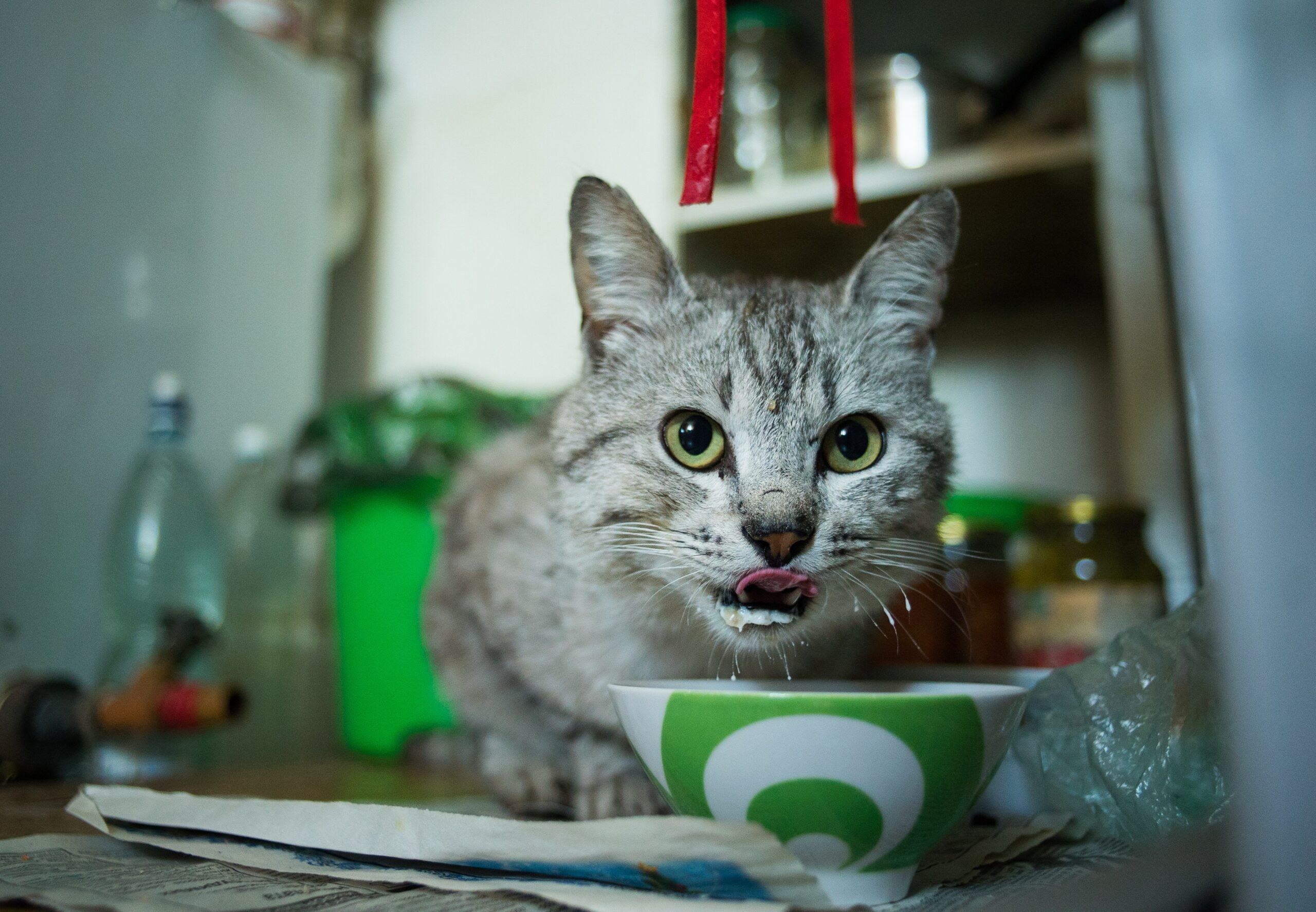The dietary habits of cats have long been a topic of interest and speculation. Cats are known for their natural predatory behavior, but whether they actively consume bats remains a subject of debate. This article aims to explore the relationship between cats and bats, shedding light on the potential existence or myth surrounding instances of cats hunting and eating bats. Additionally, it will discuss any associated dangers and health risks, as well as strategies for promoting coexistence between these two species in our environment.
Key Takeaways
- Cats exhibit natural predatory behavior and may be attracted to bats due to their small size and erratic flight patterns.
- Cats are skilled predators with sharp claws, agility, and excellent night vision, making them capable hunters.
- Cats are obligate carnivores with a preference for animal tissue, but they may display opportunistic feeding behaviors when prey is scarce.
- Bats have evolved to avoid predation, making them difficult targets for cats, and their elusive nature and nocturnal habits make it less likely for cats to encounter them.
Cats and Their Natural Predatory Behavior
Cats exhibit natural predatory behavior, which includes hunting and catching small animals such as bats. This behavior is deeply rooted in their evolutionary history and serves as a means for survival. Cats are highly skilled hunters with keen senses and physical attributes that enable them to excel in capturing prey.
The predatory behavior of cats is ingrained in their DNA. As descendants of wild feline species, domesticated cats have retained many of the traits necessary for successful hunting. Their sharp vision allows them to detect movement even in low light conditions, while their acute hearing helps them pinpoint the location of potential prey. Additionally, cats possess retractable claws that can be extended when needed, providing them with an advantage during attacks.
When it comes to hunting bats specifically, cats may be attracted to them due to their small size and erratic flight patterns. Bats are nocturnal creatures that navigate through echolocation, emitting high-frequency sounds to locate objects in their environment. While this adaptation makes bats proficient at avoiding obstacles and predators, some domesticated cats have been observed successfully catching bats mid-flight.
However, it is important to note that not all cats engage in bat hunting. Factors such as habitat location and individual cat preferences play a role in determining whether a cat will actively pursue bats as prey. Furthermore, pet owners should consider the potential risks associated with allowing their cats to hunt bats due to the possibility of transmitting diseases or parasites from the captured prey.
The Diet of Cats: Carnivores or Opportunistic Eaters
Felines are known for their preference towards consuming animal tissue, which aligns with their classification as obligate carnivores. This dietary specialization is reflected in their sharp teeth and claws that enable them to capture and kill prey efficiently. While cats primarily rely on meat-based diets, they do exhibit some degree of flexibility when it comes to their food choices. Domestic cats, in particular, have evolved from wild ancestors that were skilled hunters capable of capturing a wide range of small mammals, birds, reptiles, and insects.
Although cats are primarily carnivorous by nature, they can also display opportunistic feeding behaviors. In certain circumstances where prey availability is limited or scarce, cats may resort to consuming alternative food sources such as fruits or vegetation. However, it is important to note that this behavior does not imply that cats have an innate preference for non-meat items as part of their diet.
Understanding the dietary habits and preferences of felines provides valuable insights into their natural behavior and adaptations as predators. Furthermore, exploring the diverse eating patterns among different species within the animal kingdom offers a fascinating glimpse into the intricate web of interactions that shape ecosystems worldwide. Transitioning into the subsequent section about ‘the fascinating world of bats and their role in the ecosystem’, further investigations will shed light on whether bats form a part of a cat’s diet or if they play other roles within these complex ecological systems.
The Fascinating World of Bats and Their Role in the Ecosystem
This discussion focuses on the importance of bat pollination, conservation efforts for bat species, and the potential ecosystem impact in the absence of bats. Bat pollination plays a crucial role in plant reproduction, particularly for plants that are adapted to nighttime pollination. Conservation efforts aimed at protecting bat species are essential due to their ecological significance and declining populations. Furthermore, the absence of bats from ecosystems could have far-reaching consequences, including reduced plant diversity and disruption of food chains.
Bat Pollination Importance
Bat pollination is an important ecological process that contributes to the reproductive success of various plant species. This unique form of pollination involves bats as the primary agents in transferring pollen from one flower to another. Some key points about bat pollination include:
- Bats are attracted to flowers that produce copious amounts of nectar, often with pale or white petals that stand out against the night sky.
- These nocturnal creatures have co-evolved with certain plants, developing specialized adaptations such as elongated snouts and long tongues to access nectar deep within floral tubes.
- As bats feed on nectar, they inadvertently pick up pollen grains on their fur and bodies.
- When bats visit other flowers for feeding, they transfer these pollen grains, enabling cross-pollination between plants.
This intricate relationship highlights the vital role bats play as pollinators and emphasizes the interconnectedness of species within ecosystems.
Bat Species Conservation Efforts
One essential aspect of bat species conservation efforts involves understanding and mitigating the various threats these animals face in their habitats. Bats are exposed to a range of challenges that can impact their populations and overall survival. Habitat loss and degradation are major concerns, as deforestation and urbanization continue to encroach upon bat habitats.
Additionally, pollution from pesticides and chemical contaminants can have detrimental effects on bat health and reproduction. Climate change is another significant threat, as it alters weather patterns, disrupts food availability, and affects roosting conditions for bats.
In addition, disease outbreaks such as white-nose syndrome have decimated bat populations in certain regions. To ensure the long-term conservation of bat species, it is crucial to address these threats by implementing habitat preservation measures, reducing pollution levels, promoting sustainable land use practices, monitoring disease prevalence, and adapting conservation strategies to mitigate the impacts of climate change.
Ecosystem Impact Without Bats
The absence of bats in an ecosystem can have significant repercussions on pollination, seed dispersal, and insect control mechanisms. Bats play a crucial role as pollinators by transferring pollen from one plant to another while foraging for nectar. Without bats, plants that rely on bat pollination may struggle to reproduce, leading to reduced genetic diversity and potential declines in plant populations. Additionally, bats are important seed dispersers as they consume fruits and disperse the seeds through their droppings. The absence of bats could result in limited seed dispersal, affecting forest regeneration and overall biodiversity. Furthermore, bats contribute to insect control by consuming vast quantities of insects each night. Their absence could lead to increased insect populations, potentially causing imbalances within the ecosystem and impacting crop yields or human health indirectly.
Instances of Cats Hunting and Eating Bats: Myth or Reality
Instances of cats hunting and consuming bats have been a subject of debate, with conflicting evidence regarding the reality of such occurrences. Some anecdotal reports suggest that cats do indeed hunt and consume bats, while others argue that such instances are rare or even non-existent. One reason for this disparity in accounts is the difficulty in observing and documenting these interactions between cats and bats due to their nocturnal habits and elusive nature.
Supporters of the notion that cats prey on bats point to their natural instincts as skilled predators. Cats are known for their agility, sharp claws, and excellent night vision, all of which make them capable hunters. Bats, being small mammals that can fly erratically, could be perceived as suitable targets for feline predators.
On the other hand, skeptics argue that bats possess unique adaptations that make them unattractive or challenging prey for cats. Bats are often associated with echolocation abilities, flight maneuvers like sudden direction changes, and roosting in inaccessible locations such as caves or high tree canopies.

Potential Dangers and Health Risks Associated With Cats Eating Bats
Potential dangers and health risks associated with the consumption of bats by cats include the transmission of zoonotic diseases, such as rabies or histoplasmosis. These diseases can be transmitted through direct contact with infected bats or by ingesting their tissues or fluids. Cats that hunt and consume bats are at risk of contracting these diseases, which can have serious consequences for both the cats themselves and for humans who come into contact with them.
- Rabies: Bats are known carriers of the rabies virus, and cats that eat infected bats can become infected themselves. Rabies is a viral disease that affects the central nervous system and is almost always fatal once symptoms appear.
- Histoplasmosis: This fungal infection is caused by inhaling spores from bat droppings (guano). Cats that consume bats may also ingest guano, increasing their risk of developing histoplasmosis. Symptoms include fever, cough, chest pain, and fatigue.
In addition to these specific health risks, there are also general concerns associated with eating wild animals. Bats may carry other pathogens or parasites that can harm cats, such as ticks or fleas. Furthermore, hunting and consuming bats may lead to injuries from bites or scratches during capture.
Given these potential dangers and health risks, it is important to prevent cats from hunting or eating bats to protect their well-being as well as public health safety.
Promoting the Coexistence of Cats and Bats in Our Environment
The coexistence of cats and bats in our environment can have mutual benefits. Cats help control the population of pests, including insects that are potential prey for bats, while bats contribute to pest control by consuming mosquitoes and other flying insects.
However, conflicts between cats and bats may arise due to predation or disturbance of bat roosts, which need to be managed through measures such as providing alternative food sources for cats and protecting bat habitats. Educating cat owners about the importance of respecting bat populations and implementing responsible pet ownership practices can also play a crucial role in ensuring the harmonious coexistence of these two species.
Mutual Benefits of Coexistence
One possible sentence could be: “Interactions between cats and bats can lead to mutual benefits in terms of pest control and pollination.” Cats and bats coexisting in the environment can have positive effects on both species. This coexistence can create a balanced ecosystem where each species plays a unique role. Some potential benefits include:
- Pest control: Bats consume large quantities of insects, including agricultural pests, reducing the need for harmful pesticides.
- Pollination: Bats are important pollinators for various plants, such as bananas, mangoes, and agave. Their feeding habits help spread pollen across different areas.
These interactions contribute to maintaining biodiversity and ecological stability. However, despite these mutual benefits, conflicts can arise from time to time due to differences in behavior and habitat requirements. Managing potential conflicts is crucial to ensure the continued coexistence of cats and bats in our environment.
Managing Potential Conflicts
In order to manage potential conflicts between cats and bats, it is important to implement strategies that promote peaceful coexistence. One such strategy is to create an environment that allows both species to thrive without direct interaction. This can be achieved by providing secure roosting sites for bats, such as bat houses or protected areas, away from areas frequented by cats.
Additionally, implementing measures to prevent cat access to sensitive bat habitats can help reduce the likelihood of predation incidents. This may involve using physical barriers or monitoring systems to limit cat movement in key areas. Education and awareness campaigns targeting cat owners can also play a crucial role in managing potential conflicts by promoting responsible pet ownership and discouraging outdoor roaming behaviors that may lead to interactions with bats. By adopting these proactive measures, the potential conflicts between cats and bats can be effectively managed while ensuring the survival of both species.
Educating Cat Owners
Educating cat owners about responsible pet ownership and the importance of preventing interactions with bats is a key aspect of managing potential conflicts between these two species. By providing cat owners with relevant information, they can better understand the risks associated with cat-bat interactions and take appropriate measures to minimize them. This educational effort can include:
- Disseminating brochures or pamphlets that highlight the dangers of cats hunting bats, emphasizing the potential transmission of diseases.
- Organizing workshops or seminars where experts discuss strategies for preventing cat-bat encounters.
- Creating online resources, such as informative videos or articles, that explain the ecological significance of bats and how their preservation benefits both humans and animals.
Through these educational initiatives, cat owners can develop a deeper appreciation for responsible pet ownership while actively contributing to the conservation efforts aimed at protecting bat populations.
Frequently Asked Questions
Can Cats Eat Bats Without Any Negative Health Effects?
Cats have a carnivorous diet and are known to consume small mammals. However, it is important to note that the consumption of bats by cats may pose potential health risks due to the possibility of infection with diseases carried by bats.
Are There Any Specific Breeds of Cats That Are More Likely to Hunt and Eat Bats?
The question under investigation pertains to the potential variations among cat breeds in terms of their likelihood to engage in bat hunting and consumption. This inquiry aims to determine if certain feline breeds display a higher propensity for such behavior.
How Common Is It for Domestic Cats to Hunt and Eat Bats?
The current question pertains to the prevalence of domestic cats hunting and consuming bats. The frequency with which this behavior occurs among domesticated felines is yet to be determined through rigorous scientific investigation.
What Are Some Signs That a Cat May Have Eaten a Bat?
Signs that a cat may have eaten a bat include finding bat remains near the cat, droppings containing bat parts, and behavioral changes such as increased aggression or lethargy. Veterinary consultation is advised for confirmation and appropriate treatment.
Are There Any Measures That Can Be Taken to Prevent Cats From Hunting and Eating Bats?
Measures can be taken to prevent cats from hunting and consuming bats. These may include keeping cats indoors, using deterrents such as motion-activated sprinklers or ultrasonic devices, and creating a habitat that discourages bat activity near residential areas.
Conclusion
In conclusion, cats are known for their natural predatory behavior and can hunt a variety of prey. While there have been instances of cats hunting and eating bats, it is not a common occurrence. Cats are primarily carnivores but can also be opportunistic eaters. Bats play a vital role in the ecosystem as pollinators and insect controllers. However, it is important to note that there may be potential dangers and health risks associated with cats eating bats. Promoting the coexistence of cats and bats in our environment is crucial for maintaining ecological balance.


1 thought on “Do Cats Eat Bats: Everything You need to Know”